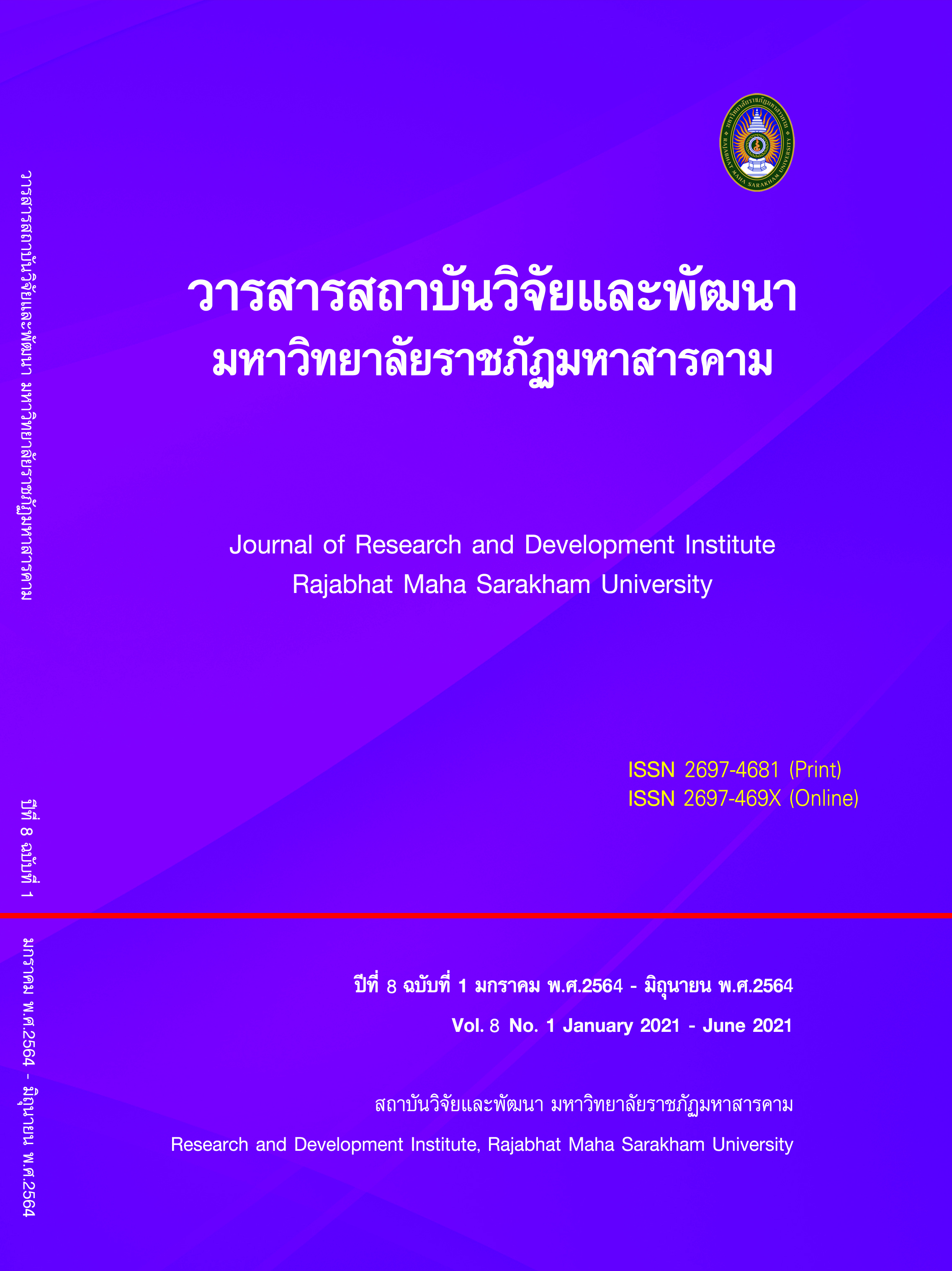The model of educational quality management by using a network in small secondary schools under the secondary educational service area office 26
Keywords:
Educational quality management, Network, Small secondary schoolAbstract
The purpose of the research are 1) to study the components of educational quality management and network operations in small secondary schools in the secondary educational service area office 26 2) to study the current conditions and desired conditions of educational quality management in small secondary schools 3) to create a model for educational quality management using a network in small secondary schools and 4) to attempt of using the educational quality management model in small secondary schools as a research and development model. The processes of the research were divided into 4 phases; phase 1 the target group confirming the composition as 7 experts. Phase 2 the present samples and desirable school administrators and teachers are 318 persons. Phase 3 the target group at the critical model parley are school administrators, chairman of the board of directors of the basic education and 63 teachers, and a group of 9 experts to confirm the model. And phase 4 the target group for the experiment school administrators, basic education committees, and teachers were 202 persons. The target groups for evaluation are the educational monitoring and evaluation committee and 20 educational supervisors, the target group with important information are 140 students, and 105 parents and communities. The results of the research showed that;
- The results of the study of components from the study of related documents and interviews found that there are 8 components and 87 indicators. The results of the analysis of the network components and indicators have 6 components and 74 indicators.
- The result of the study of the present educational quality management by using a network in small secondary schools under the secondary educational service area office 26 found that Overall practising was at a medium level ( = 3.40, S.D. = 0.69) and the desirable conditions the overall had the desirable condition at the highest level ( = 4.60, S.D. = 0.59).
- The result of the model creation found that the model has the following components (1) introduction consists of principles and reasons, objectives, and purpose. (2) The network building process consists of recognizing the need to create a network, the organization network, the joint commitment, network management, relationship development, and relationship maintenance. (3) Method of operation according to the model (4) The operational process of the network consists of the important activities that enhance the effectiveness of the network's mission, techniques or methods for developing network members, the empowerment process, desirable features of members, and leaders, networks and network operations and reflections which bring educational management factors into operation in the network for educational quality management. It has the following components; personnel, budget, materials, information technology, and management. (5) The evaluation of using the model. And (6) Success conditions for applying the model.
- The results of the experiment using the model found that; (4.1) As for the results of the network building process before the operation, the overall has the highest level of performance and after the operation has the highest level of performance. (4.2) Regarding the result of the operation of the network before the performance was at the highest level, while after the performance was at the highest level. (4.3) Effects of the educational quality management process of the network before the operation the performance was at the highest level and the after operations the performance results were at the highest level. And the results of the inquiry of the satisfaction of school administrators, teachers, parents and communities on the model showed that the satisfaction is at the highest level.
References
Chareonwongsak, K. (2002). Integrative thinking. Bangkok: Success Media.
Keeves, Peter J. (1988). Model and Model Building. Educational Research Methodology and Measurement : An International Handbook. Oxford: Pergamum Press.
Khanthapoom, U. (2015). Developing a network model of cooperation in developing learner quality for primary schools Under the Primary Education Service Area Office. Thesis Ph.D. Mahasarakham: Mahasarakham University.
Krejcie, Robert V. & Morgan, Daryle W. (1970). Determining sample size for research activities. Educational and Psychological Measurement, 30(3), pp.607-610.
Ministry of Education. (2019). Education News: Driving an Integrated Education Plan for 6 Regions. [Online]. https://www.moe.go.th/moe/th/news/
Willer, D. (1986). Scientific Sociology: Theory and Method. Englewood cliff, NJ.: Prentice-Hill.
Downloads
Published
How to Cite
Issue
Section
License
Copyright (c) 2021 Journal of Research and Development Institute Rajabhat Maha Sarakham University

This work is licensed under a Creative Commons Attribution-NonCommercial-NoDerivatives 4.0 International License.
Articles that are published are copyrighted by the authors of the articles







